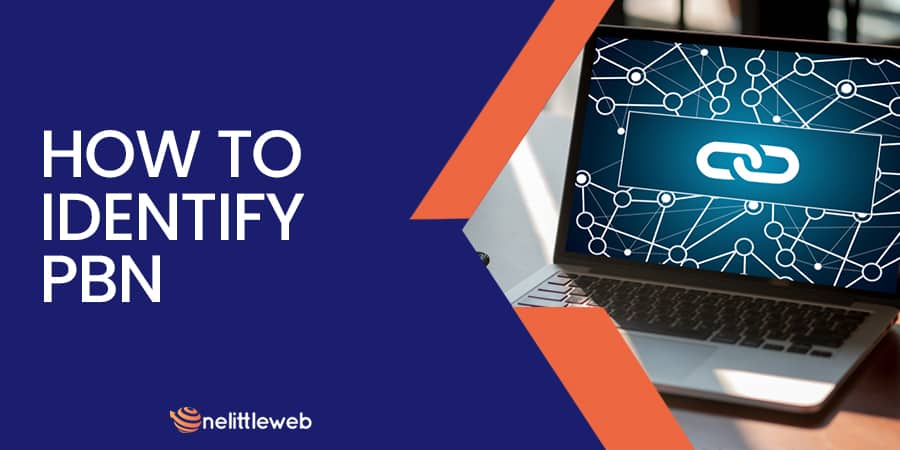If you’ve been doing link building for your website for a while, you might hear about the famous private blog networks.
A private blog network or PBN is an array of interlinking websites that are used to build links to a single site for the purpose of manipulating the rank on the SERP.
These sites are usually owned and maintained by a single person so that the links can be directed between the owner’s website.
This notorious practice is designed to take advantage of the power of links in Google’s algorithm and enhance the visibility of the sites with mass-created blog links.
For years, this practice has been quite popular among the link builders since it worked relatively well for ranking.
While it still does in some ways, the biggest problem with PBNs is they are on the hit list of Google.
The search giant has been penalizing sites for getting backlinks from these private blog networks since 2014.
Considering this fact and the recent algorithm updates from Google, it’s recommended that you avoid PBNs.
But how do you know you’re not getting backlinks from such websites?
While reading this article, you will learn about some factors that will help you to identify PBNs.
How PBNs Get Setup?
You must be wondering how these networks are created and who owns them.
Private blog networks usually come to life from the expired domain auction.
The webmaster buys them at a very low price while they are still fresh and their existing PageRanks haven’t diminished.
The webmaster usually buys such sites as much as necessary and sets up a quick block on each of them, populating them with some content, and takes the advantages of incoming links whenever possible.
Why were those domains abandoned and put up for sale?
You may never know!
Spotting a Private Blog Network – Ways to Do It
Even a few years ago, it was easier to detect a PBN since they had the same IP, WhoIs information, and almost similar content across the websites.
Nowadays, sites like this are quite sophisticated and difficult to detect.
However, if you still want to check if the backlink you’re getting is part of a PBN, you should consider the following.
Check The Hosting
One of the most common features of these websites that belong to a private blog network is that they all have the same IP address.
The reason is quite obvious.
Since the host of these blogs in question is the same, there’s no way they will have different IP addresses.

How do you identify them?
You can use tools like SpyOnWeb.com or BuiltWith to identify if all these sites are built pon the same framework or not.
Domains
It’s recommended to skip those sites that have domain authority less than 25.
This is usually a good practice that helps you to avoid PBNs.
However, there’s a problem.
Most PBNs these days come with higher domain authority, meaning that more investigations are required to check the quality of those domains.
As I mentioned earlier, webmasters set up these PBNs by purchasing expired domains.
So, check out their history to find out when they were released in their current form. Also, don’t forget to check out if all those domains were redesigned at the same time.
There are tools such as Wayback Machine, which can help you to find that information.
Look at The WhoIs Information
Another way to check if a domain belongs to any private blog network is to check its WhoIs database.
The database has information and contact details about the site owner.
If you see all the site owners for a particular set of blogs are the same, there’s no doubt that these sites are connected.
Since sites belonging to a PBN have a single owner, webmasters tend to keep that information secured or private.
So, if you see that part is hidden for a particular website, think twice before you get a backlink from it.
Traffic Data
The reason you’re opting for link building is quite simple – you want to rank high on Google.
In that case, you will definitely want the link from a site that has a significant number of monthly traffic.
Getting backlinks from sites with poor traffic won’t help you to get enough traffic to your own site.

While PBNs tend to have high domain authority, most of them have fewer or no traffic at all. So, opting for those sites won’t help you in the long run.
If you’re using Chrome, install the SimilarWeb extension to check the estimated traffic data of a site before you pitch the publisher.
Content Quality & Numbers
Like Google, PBN owners are getting smarter day by day.
So, the obvious methods to detect a PBN I’ve discussed so far may not work on everyone.
Here comes the million-dollar question – what will you do then?
While the webmasters are using several tricks to make those sites look like an authentic one, you can still identify if they are PBNs or not.
One of the most effective ways is to check its content numbers and quality. Most PBNs have fewer content on their blog compared to high-quality blogs.
Unlike some high-quality, genuine websites, PBNs tend to publish poor quality content, images, as well as other visuals.
Read some of the blogs on those sites.
Are those up to the mark? Can they fulfill the readers’ intent? Are they well-researched and relevant?
If the answers are no, then you may be dealing with a PBN.
Check The Backlink Profile
Websites under a PBN most likely to have a lot of broken links.
The person who has brought those sites has only one intention – to manipulate Google’s ranking.
S/he may not have the desire or time to fix those broken links and fill them with quality content.

So, scan those sites using Ahrefs or Majestic. If you see the site has a lot of broken links, this may not be the one you should go for.
Also, look for how much interlinking is occurring between those sites.
Domains under a private blog network tend to give each other backlinks to manipulate their ranking on the SERP.
Do check for such scenarios before you get backlinks from any website.
Final Thoughts
You might be a part of a PBN without you even knowing it.
Since PBN owners are quite smart about avoiding some of the common features, it’s difficult to detect them in the first place.
However, while it’s difficult, it’s not impossible.
There are still some ways that will help you to determine the site’s quality.
Content quality, number of broken backlinks are some of the obvious factors that will help you to find the right domain for you.
Also, the link building service you’re hiring for this purpose can help you a lot regarding this matter.
No authentic and highly-reputed company will recommend such sites to you or score low-quality PBNs for your backlink.
If you’re not sure about such companies, you can always rely on OneLittleWeb.
We will manually launch a campaign and score a high-quality domain with real traffic for your backlink. There’s no way you will be served with a domain that’s part of those notorious PBNs.
Place your first order at a $275 discount on DA50+ backlinks by clicking here.

Sujan Sarkar is one of the co-founders of OneLittleWeb. He leads the agency with over a decade of experience.
In 2018, he founded OneLittleWeb, driven by a vision to fill a void in the industry, providing top-quality SEO and backlink services.
His impressive track record includes crafting over 25,000 backlinks for more than 1100 clients, generating over 1 billion in traffic. This has earned him a significant presence in the SEO realm.
He successfully leads a dedicated team of 65+ SEO professionals, focused on helping SaaS and Enterprises scale their organic traffic.
Sujan firmly believes that the best backlinks are not paid for but earned through high-quality content and strategic relationships.
Every day, he works tirelessly to position your business at the forefront of your customers’ minds, striving to elevate your brand’s visibility and authority.
His daily inspiration centers around securing client features on top-tier publications like Forbes, MSN, BBC, Yahoo, and many more. He leverages the right SEO strategies to achieve this mission.



